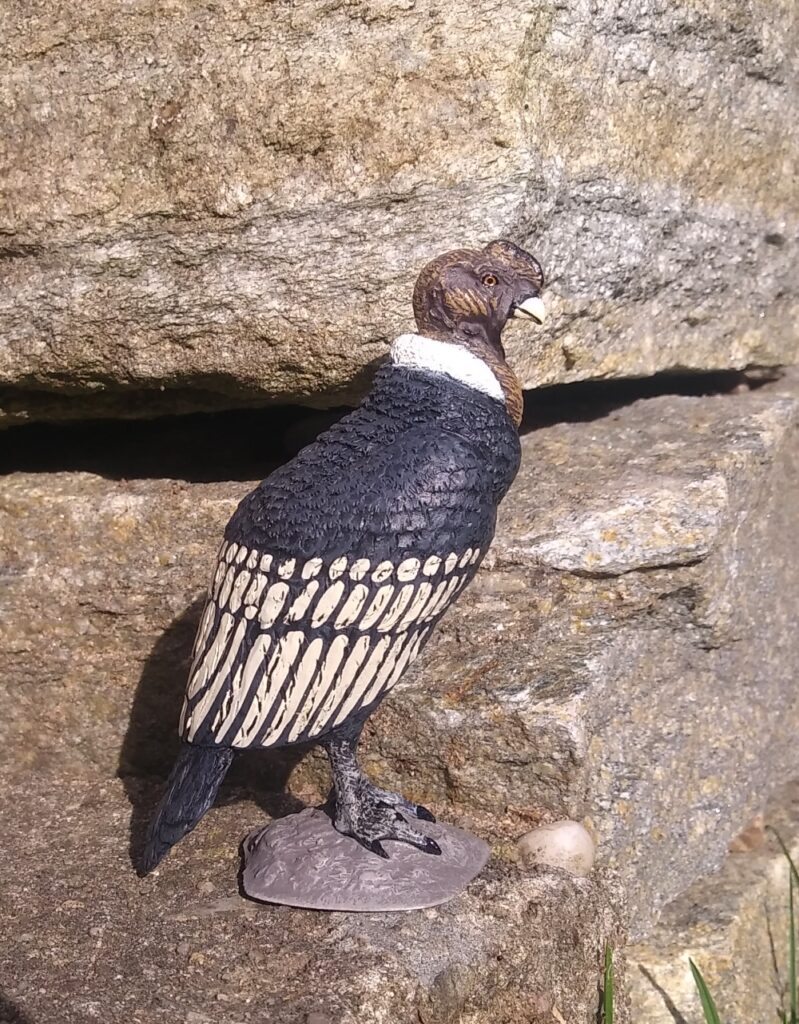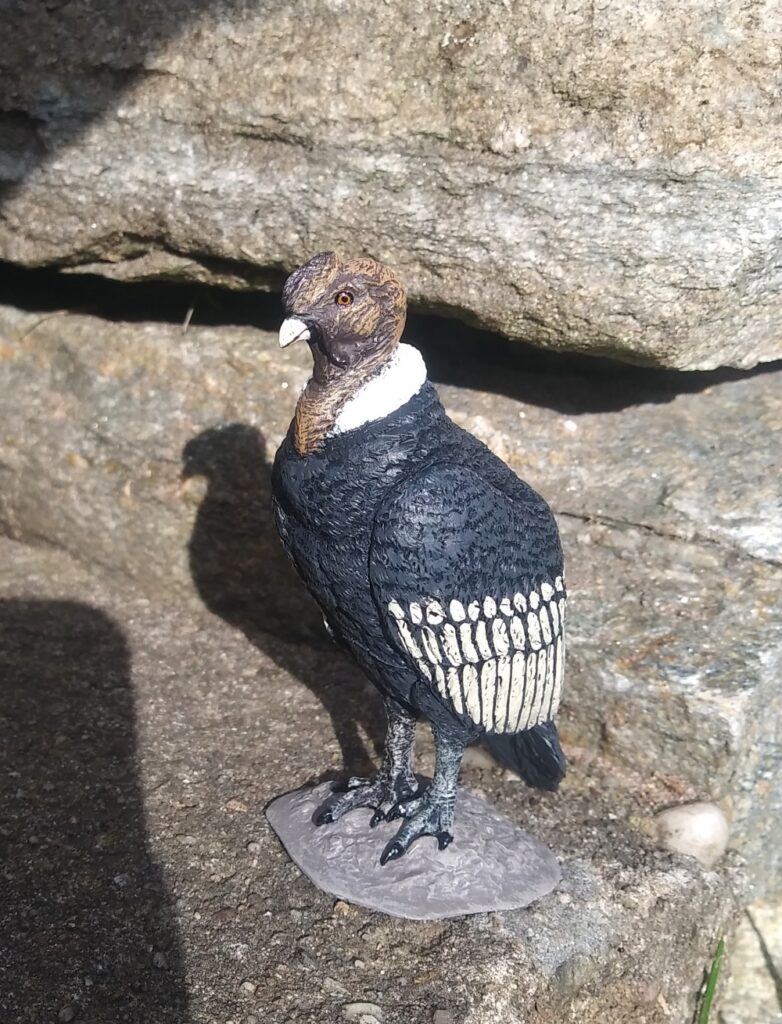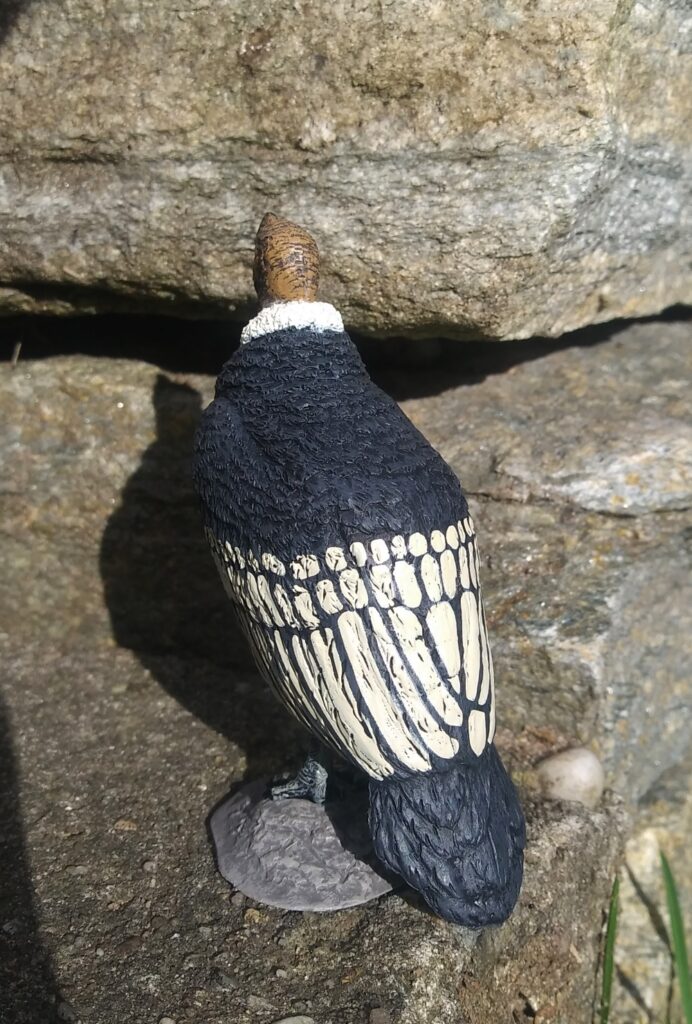Review and images by Lanthanotus; edited by bmathison1972
When I was a child of eight or nine my dad gave us cassettes with audio plays once in a while which he brought from the big city where he worked. One of these plays was The Children of Captain Grant (or In Search of the Castaways) by Jules Verne. Without spoiling too much, suffice to say that the siblings Mary and Robert travel to Patagonia – which in itself was a location clouded by mystery and adventure for my childish self – where Robert will be caught by a monstrously big bird, an Andean Condor…. for the rest of the story feel free to read the book or listen to the audio play on YouTube. Some decades later I had the opportunity to see the mysterious land of Patagonia myself and also spot some Andean Condors and they are indeed marvelous birds…

Now, “marvelous” may not be a fitting description… “gigantic”, “awesome”, or maybe “gargantuan” may be more accurate. The Andean Condor (Vultur gryphus) is considered the largest extant bird of prey. Large males can measure up to a staggering 3.3 m wingspan, although the mean measure is considerably smaller (~2.8 m). Still impressive there are several bird species with wider wingspans, but the Andean Condor boasts the largest wing surface in extant birds. These large wings allow for an almost endless flight with almost no energetic cost to the bird. The condor uses warm upwinds to start its flight from steep cliffs once the air has warmed enough, and then the bird flies for dozens and hundreds of kilometres in search for prey. Despite its (non taxonomic) classification as bird of prey and the tales and adventure stories, the condor is not capable of grabbing any living prey and carrying it away, but instead feeds on carrion (and some small game prey which it kills with its beak).

Aside from its large size, the Andean Condor has a very recognizable feature, unique among birds of prey…the males boast an impressive comb (or caruncle) atop their head, a thing you would usually find in Galliformes (chickens and kin). One would think a bird as big and popular as the Andean Condor would already be presented as a toy by all the big companies but in fact, you are hard pressed to find one. There are some figures by several companies but they are discontinued for decades and hard to come by.

Papo found its love for birds in recent years and gave us quite an array of impressive additions to our collections in the recent past, mainly of Eurasian birds. Now they gave us the Andean Condor. The figure stands 8 cm tall, showing the bird atop a small rock in a calm, resting pose. It is unmistakably a male and as we are accustomed with Papo, the detailing is of a high standard. The head is dark brownish red, the feet dark blueish grey and the collar plain white. Papo decided to tone down the white in the flight feathers which may be found in some individuals, maybe related to location. The paint job is executed very well, the flight feathers are obviously painted with the help of a mask.

Overall the figure is a very successful rendition, but if you like bean counting you may notice that the toes are a tad bit too short as is the beak. Also, the caruncle should move more forward onto the (longer) beak, and it would have put the cherry on the cake had Papo added the small break through/hole in the base of the comb, just atop where the skin yields for the beak. Also one could wish for a more agitated pose, but maybe high sales can move the company to create a partner for that male?

All that said, I am happy to have added a very good Andean Condor figure to my collection and it makes me hope for more exciting bird releases by Papo in the future.
Disclaimer: links to Ebay and Amazon on the AnimalToyBlog are affiliate links, so we make a small commission if you use them. Thanks for supporting us!




This figure looks marvelous indeed! More quality “bird of prey” representation is always welcome in my book.
I liked it more than I thought. I was initially worried that the figure would be too small, but it wasn’t and had a nice weight to it.
Es muy buena. Estoy esperando que Papo lance un ave emblemática de toda Europa, como es la Grulla común, Grus Grus, sería un éxito de ventas.